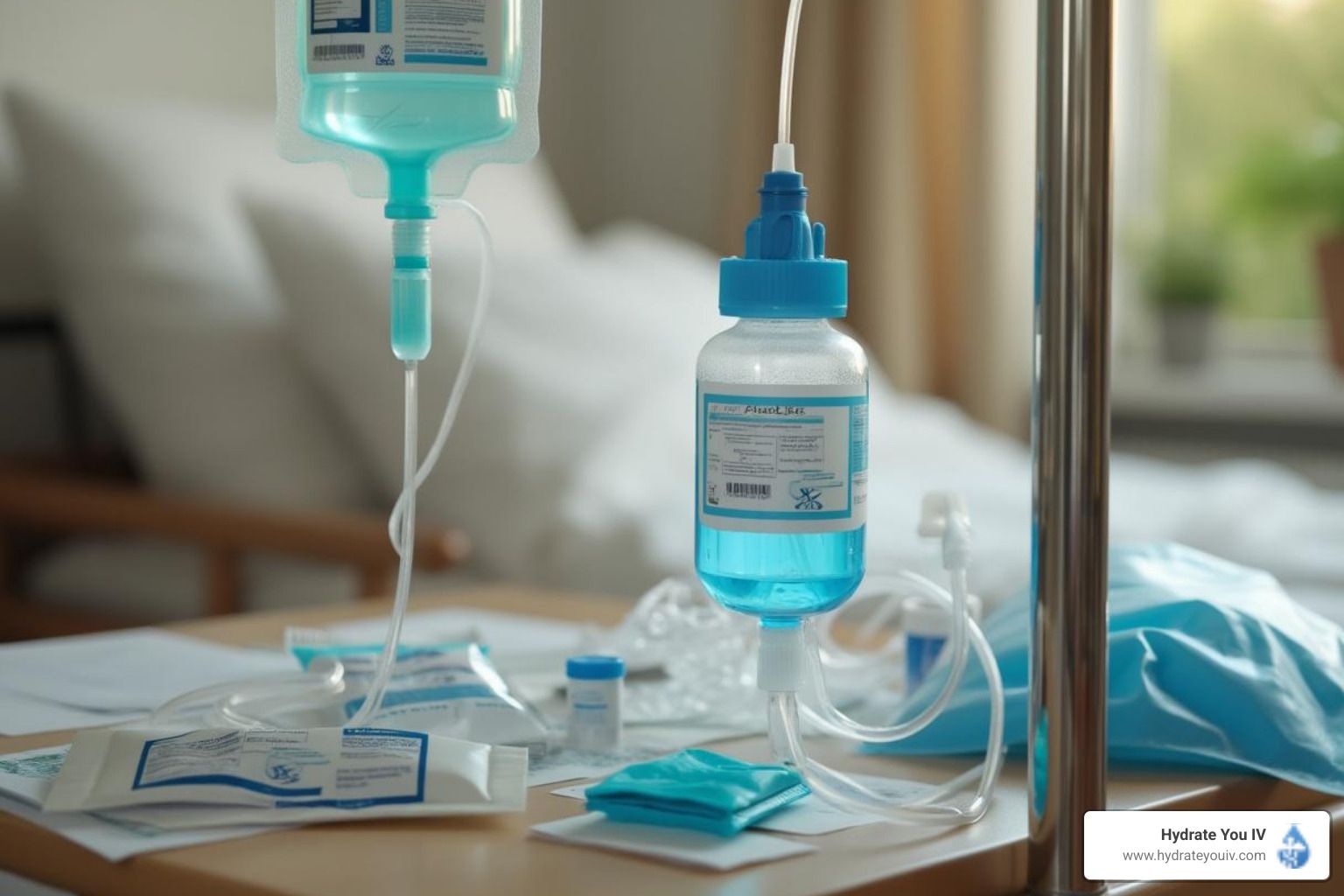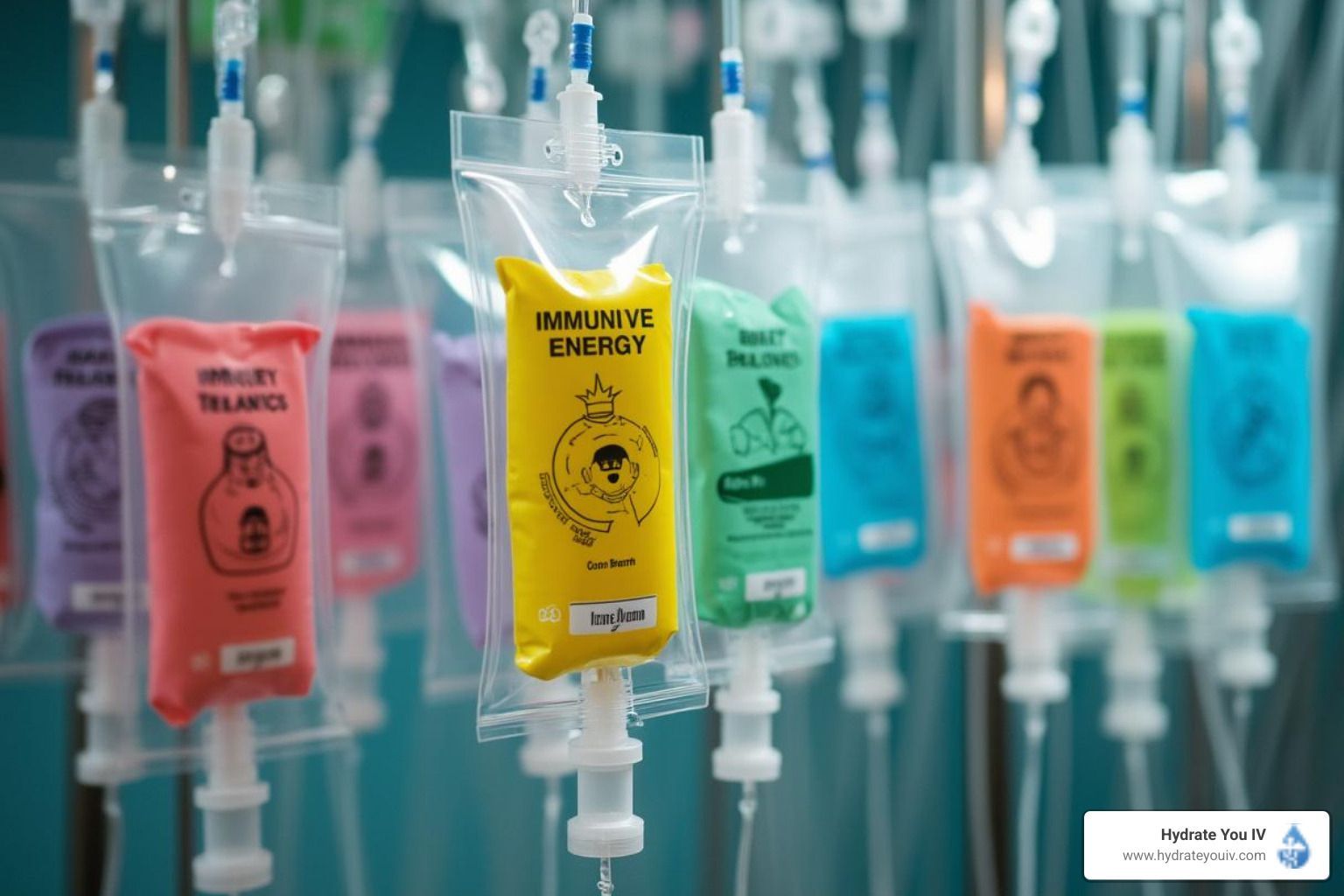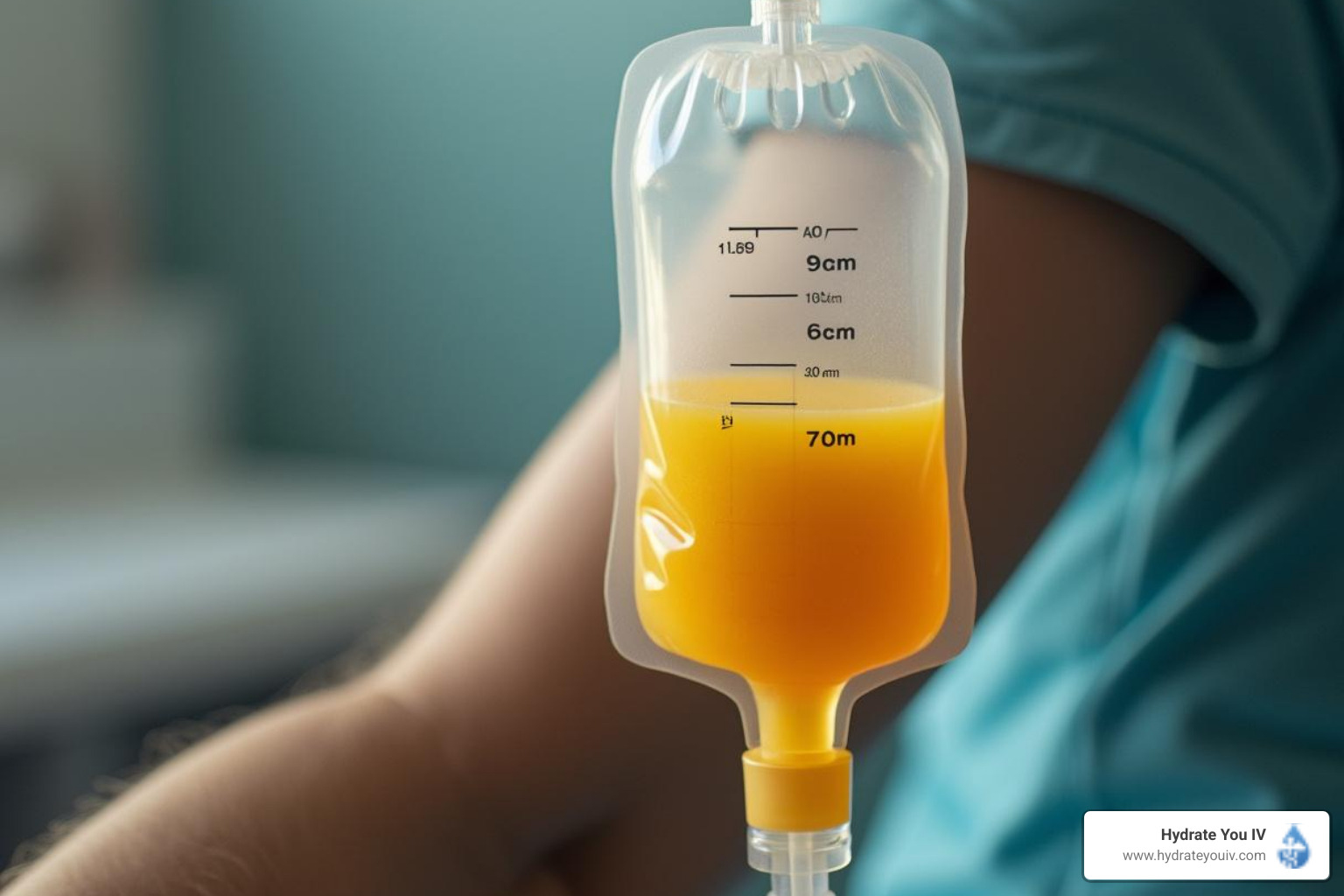Potassium IV Side Effects: What to Expect and How to Stay Safe
Potassium IV therapy is often used to restore low potassium levels quickly, especially in cases where oral supplements are not effective or fast enough. While it can be vital for preventing muscle weakness, irregular heart rhythms, or severe electrolyte imbalance, potassium given through an IV drip must be handled carefully. This is because injecting potassium directly into the bloodstream can cause side effects ranging from mild discomfort to potentially serious complications if not monitored properly.
Understanding how it works, what side effects to expect, and how to recognize danger signs can help you stay informed and safe during treatment. At Hydrate You IV, we screen your history and labs, tailor the dilution and drip rate, and monitor throughout to minimize side effects.
What Is Potassium IV Therapy and Why It’s Used
Potassium IV therapy involves administering potassium, usually as potassium chloride, directly into the bloodstream through a vein.
It’s commonly used when:
- Someone has moderate to severe hypokalemia (low potassium levels)
- Vomiting, diarrhea, or dehydration has caused electrolyte loss
- There is poor absorption from the digestive system
- Rapid potassium correction is medically necessary
Why IV Instead of Oral Supplements?
Unlike pills, an IV delivers potassium immediately into the bloodstream. This bypasses digestion, making absorption faster and more predictable but also increasing the risk if levels rise too quickly. That’s why potassium IV is considered a high-alert therapy and must be administered slowly and under supervision.
What Are the Side Effects of a Potassium IV?
Potassium IV therapy is effective in treating low potassium levels quickly, but because potassium directly affects the heart and muscles, even small errors in dosing or infusion speed can cause side effects. Some reactions are mild and temporary, while others may be serious and require medical attention. Understanding the difference between expected and dangerous reactions helps ensure safe treatment.
Mild side effects, such as warmth at the infusion site or nausea, are usually manageable and go away when the drip rate is slowed or diluted. However, serious issues like abnormal heart rhythms, vein damage, or dangerously high potassium levels (hyperkalemia) can develop if the infusion is too rapid or given without proper monitoring.
Common Potassium IV Side Effects
Most people tolerate potassium infusions well, but mild discomfort is quite common. These effects are not usually harmful and tend to improve on their own or with small adjustments during the infusion.
1. Infusion Site Discomfort
Because potassium solutions can be irritating to veins, it’s normal to experience:
- A mild burning or stinging sensation as the infusion begins
- Redness or warmth around the IV site
- Slight swelling or tenderness, sometimes known as phlebitis (vein inflammation)
This usually improves when the solution is diluted further or the drip is slowed. If burning becomes intense or spreads beyond the vein, the infusion should be paused and checked.
2. General Mild Symptoms
Some people notice temporary sensations during or shortly after the infusion, such as:
- A metallic taste in the mouth
- Nausea or slight stomach discomfort
- Tingling in the hands, feet, or lips
- A brief feeling of warmth or flushing through the body
These symptoms are typically short-lived and not dangerous unless they escalate or persist.
Serious Potassium IV Side Effects You Should Know
While rare, certain side effects are considered serious and must be treated immediately. These usually occur when potassium is infused too quickly, given in high doses, or administered to someone with underlying heart or kidney issues.
1. Hyperkalemia (Excess Potassium in the Blood)
If potassium levels rise too high, it can interfere with normal muscle and heart function. Signs to watch out for include:
- Irregular heartbeat or heart palpitations
- Muscle weakness, heaviness, or sudden fatigue
- Numbness or tingling that becomes more widespread
Hyperkalemia is dangerous because it can lead to heartbeat disturbances if not managed promptly.
2. Cardiac (Heart) Complications
Potassium plays a major role in how the heart beats, too much, too fast can disrupt electrical signals in the heart. This can result in:
- Abnormal heart rhythms (arrhythmias)
- Slow or blocked heartbeat (heart block)
- In severe cases, cardiac arrest
This is why potassium is always administered under medical supervision and never pushed rapidly into a vein.
3. Extravasation (Leakage Outside the Vein)
If potassium accidentally leaks into surrounding tissue rather than staying inside the vein, it can cause:
- Intense burning or pain at the IV site
- Swelling, redness, or skin discoloration
- Tissue irritation or damage in severe cases
This needs urgent attention, and the IV line is usually moved to another site if this happens.
Who’s at Higher Risk of Potassium IV Side Effects?
- Kidney disease. Your kidneys clear extra potassium; when they’re impaired, potassium can build up faster than expected. That makes even standard doses riskier and demands slower drips and closer lab monitoring.
- Heart disease or existing arrhythmias. Potassium directly affects the heart’s electrical signals. If you already have rhythm issues, sudden shifts can trigger palpitations or dangerous arrhythmias.
- Medications that raise potassium. ACE inhibitors, ARBs, potassium-sparing diuretics (e.g., spironolactone), certain NSAIDs, and some supplements can push levels higher. Combining these with an IV infusion increases the chance of hyperkalemia unless dosing is adjusted.
- Dehydration or acute illness. Fluid loss from vomiting, diarrhea, or fever can swing electrolytes unpredictably. In these moments, potassium changes can happen quickly, so careful rehydration and slower correction are safer.
- Older age, diabetes, or adrenal disorders. These conditions can alter how your body handles potassium and fluids. The result is a narrower “safe zone,” so providers typically infuse more cautiously and recheck levels.
- Recent surgery or critical illness. Stress hormones, fluid shifts, and changing kidney function can all affect potassium balance after procedures or during severe illness. Close monitoring (sometimes with ECG checks) helps catch problems early.
- Low urine output or known fluid retention. If you’re not making much urine or you retain fluid easily, potassium may not clear as expected. Infusions should be slower, with frequent assessments to avoid overshooting.
How Hydrate You IV Helps Keep Potassium IVs Safe

At Hydrate You IV, infusions are planned around you, your labs, medications, and health history. We begin with a focused screen to identify heart, kidney, or medication-related risks, and we confirm a safe starting point with baseline electrolytes (and ECG when indicated). This lets us tailor dose, dilution, and rate so the therapy corrects low levels without sudden spikes. If you’re comparing options, you can also check our IV packages and pricing to see what fits your needs.
During your drip, a licensed clinician runs a slow, controlled infusion and stays attentive to comfort and safety. We use proper dilution to minimize vein irritation and pause or adjust at the first sign of burning, tingling, or palpitations. Expect quick check-ins and plain-language guidance while you relax, plus clear prompts on what to report right away, such as:
- New chest fluttering or pounding
- Intensifying burning at the IV site
After the infusion, we provide simple aftercare instructions and where appropriate repeat labs to confirm your levels and kidney function are on track. You’ll leave knowing what’s considered normal (like mild arm soreness or warmth) versus when to reach out for help, and our team remains available if anything doesn’t feel right. And if you're ready to experience safe, medically guided IV therapy, you can easily book your session with us online at any time.











